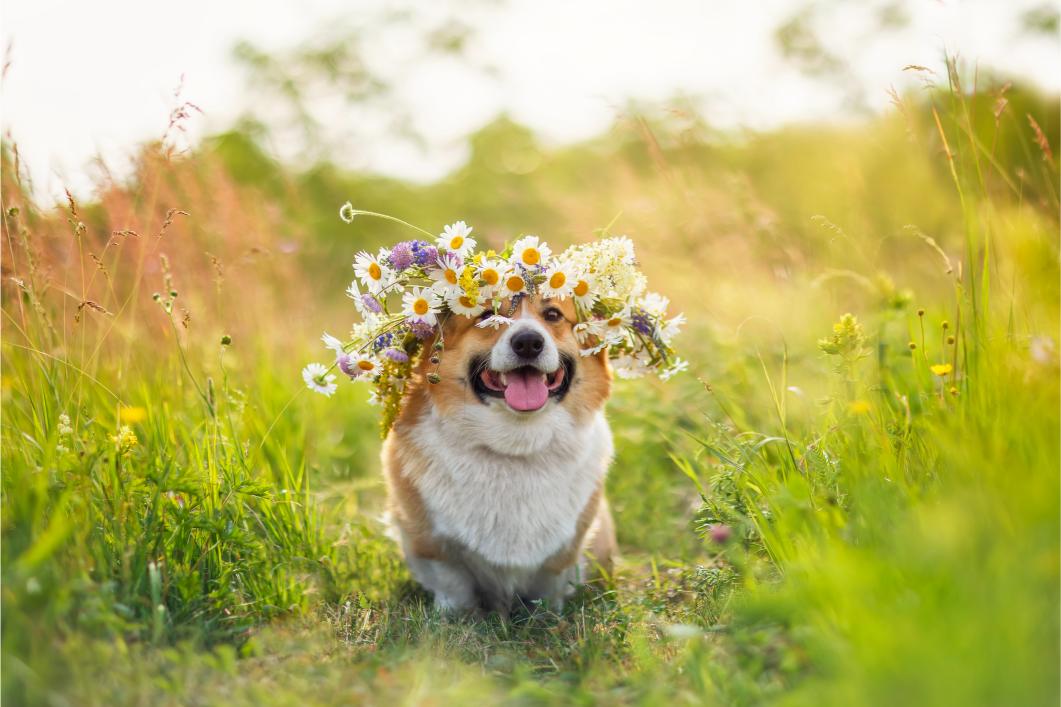Springtime in Langhorne: Pet Care Tips for Seasonal Wellness

Whether you like abundant flowers, grey, rainy days, or a weekend packed with baseball games, spring’s got something for everyone. Pets are also tuned into the seasonal changes, and may show that they are ready for whatever spring has in store. While there are plenty of great parts of spring for pets, there are some increased hazards as well. Luckily, we’re here with some tips for springtime wellness for your furry friends.
Safety First
Pet owners are typically focused on risk management and consider the myriad potential hazards that face their pets every day. Whether at home, in the park, along a trail, or at a pet-friendly store, there are loads of possible eventualities to contend with. To mitigate these fears, pet owners can learn how to protect their pets in every way possible.
Disease Prevention
Spring triggers mating behaviors, and drives wild animals and unfixed pets to roam neighborhoods. While spayed or neutered pets do not necessarily answer to this instinct, they can still get caught up in this springtime ritual. By simply being outside, pets can become either targeted mates or fighting partners.
Preventing unwanted litters is a priority, especially in spring, but reducing a pet’s chances of interacting with feral or unfamiliar animals is equally important. Stopping the spread of contagious disease is possible through routine vaccinations. If it’s been a little while since your pet’s last wellness exam, spring is an excellent time to get a handle on their core vaccines and boosters.
If it’s time for your pet to get spayed, neutered, or microchipped, Flowers Mill Veterinary Hospital is happy to help.
Say No to Bugs
An important component of spring pet care is parasite prevention. With fleas, mosquitos, and ticks multiplying, it can be hard to stop them if they ever get a foothold. A monthly, topical, or injectable medication can kill these bugs before they even have a chance.
Please let us know if your pet’s year round parasite prevention medication lapsed over winter. A negative heartworm test is required before a new prescription is filled and administered. If your pet happens to eat something they shouldn’t this spring (such as a rodent), internal parasites can also be targeted with this medication, as well.
Spring Pet Care
Many risks to pet safety are related to the growing season. There are many plants, vegetables, and fruits that can cause symptoms of toxicity. Be sure to consult this comprehensive list to be sure that your yard and garden are completely safe for your pet.
Additionally, the application and use of fertilizers, pesticides, and insecticides can endanger pet health.
- Only use products that are labeled pet-safe or non-toxic
- Allow access to the yard after the product completely dries
- Store garden aids behind closed doors, and never on the floor of the shed or garage.
Feel and Look Great
Spring is a common season for shedding. Keep your pet’s coat looking and feeling its best by regular grooming sessions, either at home or at a professional groomer. This attention also supports skin, paw, and ear wellness.
We also recommend taking advantage of the longer, sunnier days by adding or extending outdoor recreation or play with your pet. We can help you design an exercise routine that promotes long term vitality.
Please call our staff at (215) 752-1010 with any questions or concerns about springtime pet care.

